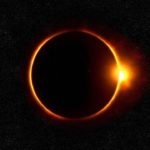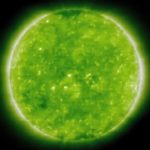Mesa Verde’s Sun Temple Reveals Geometrical ‘Genius,’ Physicist Says
An 800-year-old ceremonial complex near the famous cliff dwellings of Mesa Verde was built using the same basic geometry found in ancient monuments from Greece to Egypt, a new study suggests.
The site, in southwestern Colorado, also appears to have been measured out in multiples of 30.5 centimeters, or about 1 foot, suggesting that the Ancestral Puebloan architects who designed the complex used a common unit of measurement.
Together these new insights reveal a “genius” for precise geometry that’s gone unrecognized in Ancestral Pubeloan architecture, said Dr. Sherry Towers, a physicist and statistician at Arizona State University who conducted the study.
“These findings represent the first potential quantitative evidence of knowledge of advanced geometrical constructs in a prehistoric North American society,” Towers writes, in her paper published in the Journal of Archaeological Science: Reports, “which is particularly remarkable given that the Ancestral Pueblo peoples had no written language or number system.”
The focus of Towers’ research was Mesa Verde’s Sun Temple, a small complex of masonry buildings that sits on top of a mesa across from the Cliff Palace cliff dwellings in Mesa Verde National Park.

When it was first excavated in 1915, Sun Temple was found to lack any domestic artifacts or trash middens, suggesting that its purpose was ceremonial instead of for day-to-day use.
(Learn about a new theory about the purpose of another structure at Mesa Verde: “Mesa Verde’s ‘Mummy Lake’ Was Built to Hold Rituals, Not Water, Study Says“)
And some features of the site were also thought to align with the sun and moon at certain times, a possibility that Towers set out to study in the summer of 2015, a hundred years after it was first investigated by archaeologists.
“The site is known to have been an important focus of ceremony in the region for the Ancestral Pueblo peoples, including solstice observations,” Towers said in a statement to the press.
“My original interest in the site involved looking at whether it was used for observing stars as well.”
When she began analyzing Sun Temple’s dimensions, however, a pattern soon emerged.
“I noticed in my site survey that the same measurements kept popping up over and over again,” she said.
“When I saw that the layout of the site’s key features also involved many geometrical shapes, I decided to take a closer look.”
Towers used on-the-ground measurements and aerial photographs of the site to determine the site’s exact dimensions.
Then she examined the distances between some of Sun Temple’s key features, like the front and back walls of its main D-shaped building and the centers of its four circular structures, described as kivas, though they likely served some other function.

Her results, she said, showed the appearance of several key geometrical shapes, such as right triangles, Pythagorean triangles, and the so-called Golden Rectangle, a well-proportioned shape that often turns up in ancient European art and architecture.
For example, Towers noted, the centers of Sun Temple’s two main circular kivas align at a precise 90-degree angle to the temple’s front wall, forming a right triangle.
And the lengths of its sides are in the ratio 3:4:5, forming what’s known as a Pythagorean triangle.
Similarly, Towers said, the form that circumscribes the shape of the D-shaped structure is a Golden Rectangle.
Its sides fit the ratio of (1 + √5)/2, which has been recognized by artists and architects the world over as being visually “pleasing,” Towers noted.
However, mystics, fans of “alternative history,” and pseudo-archaeologists should all take note: Towers does not by any means intimate that the forms found in Sun Temple mean that they were designed with some unrecognized technology or arcane knowledge.
No single civilization had a unique purchase on the concept of the right triangle, for instance, and Towers observes that a shape like a Golden Rectangle can be mapped out using little more than a couple of people and a length of cordage to create a straight line and an arc.
“Golden rectangles are readily constructed with a straightedge and a compass and do not require knowledge of irrational numbers,” she writes.
Instead, she said, the marvel of Sun Temple’s geometry is its consistency and accuracy.
Her measurements deviated from these shapes with a relative error of less than one percent, she said.
“This is what I find especially amazing,” Towers said in the statement.
“The genius of the site’s architects cannot be underestimated.
“If you asked someone today to try to reconstruct this site and achieve the same precision that they had using just a stick and a piece of cord, it’s highly unlikely they’d be able to do it, especially if they couldn’t write anything down as they were working.”
(Learn about an Ancestral Puebloan site uniquely suited to its environment: “900-Year-Old Village Recorded in Volcanic Badlands of New Mexico“)
Moreover, Towers’ measurements also seemed to reveal repeated use of the same unit of measure.
This can be seen in the consistency of many of the site’s key dimensions, she noted.
For example, the radius of each of the three kivas inside the D-shaped structure is nearly identical: about 270 centimeters or 8.85 feet.
Likewise, the radius of the smaller kiva outside the main building is about 230 centimeters or 7.5 feet, which is also the distance between the two interior kivas, as well as from the main kiva to the outside wall.
Based on these and other measurements, Towers estimates that the measurements used to build Sun Temple were based on a common unit of 30 to 30.5 centimeters, which is about the same as the modern imperial foot, or 30.48 centimeters.
To determine whether this ancient “foot” was truly a uniform unit of measure in the Ancestral Puebloanworld, Towers proposes studying other monuments in the Southwest — such as Pueblo Bonito, the largest great house in New Mexico’s Chaco Canyon — to see if the same patterns present themselves.

Towers notes: ” To within 1%, the rectangle is consistent with the dimensions of a Golden rectangle. The blue line shows the arc of a circle circumscribed within the square associated with the geometric construction of the rectangle.”
(Photo courtesy Towers/JASR. May not be used without permission.)
(Discover a recent find from the Ancestral Puebloan world: “Twin 1,300-Year-Old Villages Discovered in Arizona Sand Dunes“)
In her paper, she offers this enticement for future research: Based on aerial photographs, the shape that circumscribes Pueblo Bonito appears to be a Golden Rectangle.
“Further study is needed to see if that site also has the same common unit of measurement,” Towers said in the statement.
“It’s a task that will keep us busy for some years to come.”





